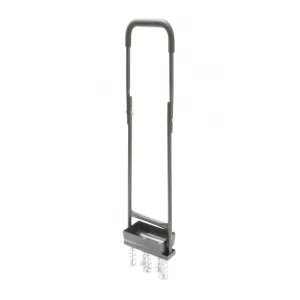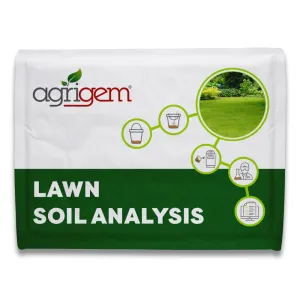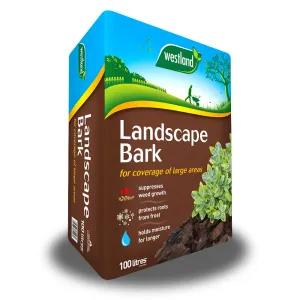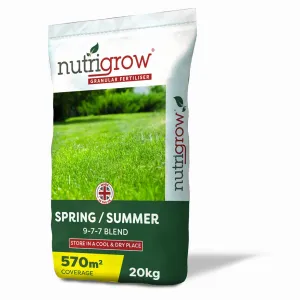What weather changes do gardeners face?
If there is one certainty with our changing climate, it’s that things are not what they used to be, and there is no longer a ‘normal’ when it comes to our traditional gardening weather and seasons.
However, there are some changes that we’re likely to see more often and that many of us have already experienced. According to the Royal Horticultural Society’s report on climate change, there are four major weather impacts that are likely to occur more frequently:
Dryer weather in the south
Gardeners can expect an increase in the number of dry spells, particularly in southern areas of the UK, and especially over the summer months.
Wetter weather in the north
In addition, there are likely to be more very wet days during winter, with heavier rainfall particularly in northern areas of the UK.
A greater risk of floods
Gardeners living near the coast, estuaries, and waterside locations are likely to face an increased risk of flooding; but increased standing water could affect most of us.
Frost-free gardens
Finally, the RHS theorises that much of the UK could be entirely frost free in future years. This could have a significant impact in terms of our ability to control pests and pathogens that are traditionally killed by a good bout of frost.
Season shift
In addition to weather impacts, there is a marked shift in our seasons - more specifically, when our seasons start and end. Broadly speaking, spring is earlier, and autumn is later - by about two weeks when compared with seasons in the last century.
Other weather impacts notwithstanding, this growing season ‘extension’ prolongs the time in which we can plant and harvest.

In theory, this should mean our gardens are now more productive than ever and we can enjoy spending more time outside making the most of warmer weather. But what other impacts are there that might prevent a more productive garden?
What will happen to our gardens if we do nothing?
This longer growing season could trigger a series of impacts including:
• Earlier flowering
• Delayed leaf fall
• Increase weed growth
• Larger plant growth
• Increased spread of existing pests and diseases
• Increase in mowing, cutting and pruning activity
• More waterlogging in winter
• Dryer ground in summer
• Introduction of Mediterranean plant species
• Change in traditional timing of fertiliser application
Wet weather impacts
If we look at the autumn and winter months when more rain is expected, we can unfortunately also expect to see:
• Poor plant growth / plant injury
• Waterlogged soil leading to nutrient leaching
• Compacted soil
• Soil erosion and root loss
• Increase in fungal disease (especially where there is increased humidity)
Excess water has to go somewhere of course, and our trees, shrubs and hedges are doing their best to draw it up. Evidence of this can already be seen in their advanced growth rate – these heavy hitters in our gardens are getting bigger – especially in areas that receive higher than average rainfall coupled with milder weather.
This in turn can, ironically, lead to dryer ground because the bigger they get, the more water they will take up, drying the ground around them and leaving the soil with little moisture for early spring growth.
In some parts of the country where primroses may once have flourished for example, conditions under trees can now be too dry for them. Conversely, wetter ground is ideal for buttercups to spread, and these can now be seen growing vigorously in parts of the UK where the ground was previously too dry.
Creating gardens that are resilient to wet weather
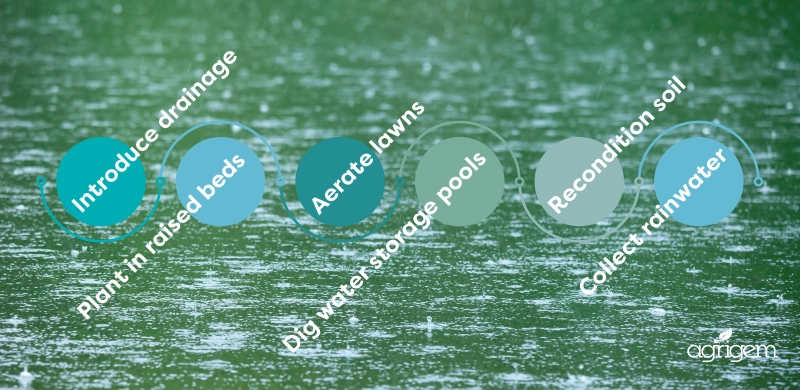
Pools of water in our gardens can choke roots, preventing them from accessing and taking up oxygen. In the long term, this can cause plants to wilt and die back - and our lawns are not immune.
- Aerating lawns can help prevent bare patches, as well as fungal, moss and algae growth which can damage the grass. Plan lawn aeration twice a year and after flood events.
- While trees and large shrubs can usually recover from a brief flooding, smaller plants, newly planted ornamentals or vulnerable seedlings may be lost. Raise beds above the ground and the surrounding water table if possible so that planting schemes don’t become waterlogged. Raised beds, rock mounds, and small terraces can all help add interest, support draining, and let your ornamental plants and shrubs escape the ground water.
- At ground level, you can do the opposite and create pools and water ‘reservoirs’ to store and soak up excess water. Plant water-loving perennials, shrubs and pond marginals in these areas.
- Introduce drainage around lawns where possible and be prepared to sweep standing water into nearby drains or purpose-built pools.
- Collect and divert water from gutters using water butts and storage tanks. Don’t forget your shed and greenhouse roofs and guttering can all be fitted with a water collection system.
- Get ready to recondition your soil once the wetter weather has abated. Keep clay breakers and other soil conditioners in your garden store to use in dryer weather and to ensure soil is healthy and workable for next season. Test your soil’s nutrient and pH levels after flooding to check for nutrient leeching. Be ready to apply a mitigating fertiliser treatment if necessary.
Essential wet weather kit list
You might find it helpful to maintain a stock of useful items to help prevent and recover from damage caused by excessive rain:
• Hollow Tine Aerator
• Clay Breaker 2.5kg
• Lawn Soil Analysis
• Winter Fertilisers
Further reading
• Article - Flooded lawn? How to help it recover quickly
• How To Guide - How To Aerate Grass
• How To Guide - How to Improve Garden Soil
• Article - What are the properties of good soil?
• Agrigem Problem Guides - Diseases
Dry weather impacts
For gardeners in the south and those facing dryer conditions, we can also expect to see:
• Parched lawns
• Leaf scorch (particularly with susceptible plants like Acers)
• Reduction in availability of thirsty plants (like hydrangeas)
• Increase in use of wetting agents to improve water availability
• Requirement for more organic matter to enrich soil
Some of our most drought resistant plants in Europe come from Mediterranean countries, where rain is scarcer, and soils are dryer. Taking our lead from these hotter gardens can help us plan changes to our own.
Gardens exposed to heat and drought face a unique set of challenges, the primary one being access to water. Collecting rainwater is crucial for dry gardens – as is being able to store it safely through summer, especially in drought prone regions experiencing hose pipe bans.
Creating gardens that are resilient to dry weather
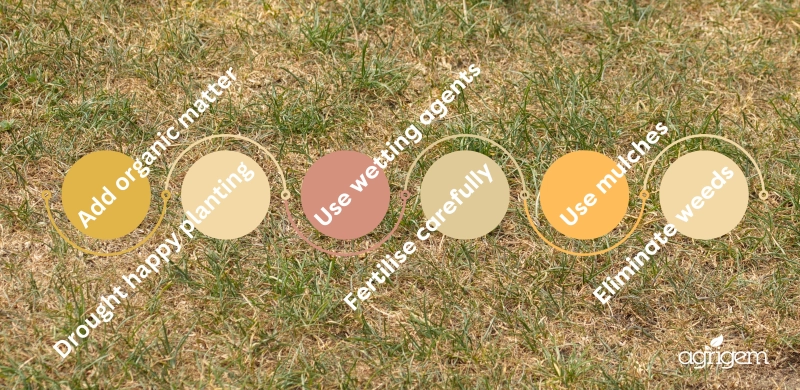
A lack of adequate water inhibits the growth of plants and therefore their ability to take up nutrients.
However, while some plants will quickly wither, turn brown, crisp and die, others will cope well with dry soils and high temperatures. It pays to prioritise and give up on ultra thirsty plants in favour of heat happy ones.
- Dig plenty of organic matter into your soil. This will help improve its structure and water retention properties which in turn will help make moisture available to plants. Well-rotted garden compost, bark and manure will all aid this process.
- Use a wetting agent on your lawn to help water penetrate and move freely through the soil. Wetting agents can help reduce the volume of water needed to water a lawn by up to 50%.
- Choose drought happy plants, but provide shade for other plants too to prevent the worse of the summer heat from impacting them. You can achieve this by planting larger plants on the south and west side of smaller less-resistant plants so that they provide additional shade during the hottest parts of the day.
- Choose a fertiliser appropriate to your lawn and plants and use carefully to the manufacturer’s instructions. Plants that receive the correct nutrition use water more efficiently and won’t be so thirsty in very hot weather as those that are not correctly nourished. Don’t over fertilise however - you want to avoid generating too much green foliage that will go on to require more water.
- Mulch is a highly effective way of helping to prevent moisture evaporation from soils. Bark, gravel, compost, pebbles and white stone chips all act very well to keep the soil moist in very hot weather.
- Ensure you take care to eliminate all weeds around plants and in lawns. Weeds will compete with your lawn and plants for moisture, and many do this very successfully in periods of drought - exploiting weaknesses in plants to take over our lawns and borders. Choose a good selective weedkiller for lawns, beds and borders. Do take advice from our technical team if you are unsure which product is best for you.
Essential dry weather kit list
As with excessive wet weather, if you think your garden may be impacted by future drought, here is a list of key items to keep in your garden store:
• Westland Landscape Bark 90L
• Compost Maker 2.5kg
• Abzorb Triple Action Wetting Agent 1L
• Feed and Weed, Moss Killer for Lawns and Grass
• 9-7-7 Nutrigrow Spring / Summer Blend Fertiliser 20kg
Further reading
• How To Guide - What are wetting agents?
• How To Guide - How To Deal With Lawn Drought
• How To Guide - How to help your lawn cope in warmer weather
• How To Guide - What is mulch?
• Summer Fertilisers
Dealing with the erratic nature of the weather will be challenging when deciding on strategies for resilience in the garden. When it comes to extreme weather, those gardeners in the midlands and central UK counties may of course have a bit of everything to contend with too.
Planning for all eventualities is difficult if you’re keen to get plants established and generate crops, but the key activities set out here should help your garden cope with extreme weather and bounce back again.




